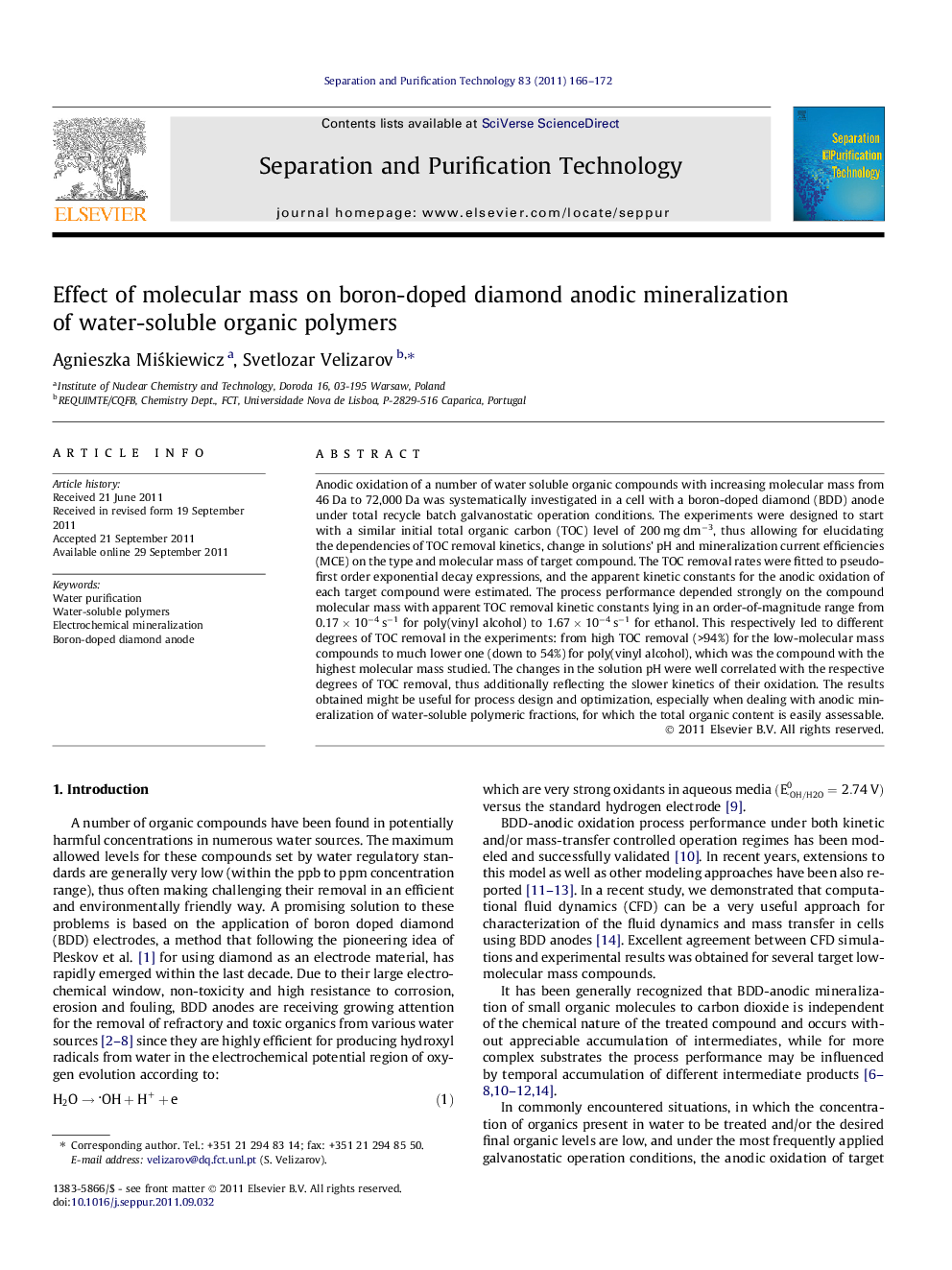| Article ID | Journal | Published Year | Pages | File Type |
|---|---|---|---|---|
| 642470 | Separation and Purification Technology | 2011 | 7 Pages |
Abstract
Anodic oxidation of a number of water soluble organic compounds with increasing molecular mass from 46 Da to 72,000 Da was systematically investigated in a cell with a boron-doped diamond (BDD) anode under total recycle batch galvanostatic operation conditions. The experiments were designed to start with a similar initial total organic carbon (TOC) level of 200 mg dmâ3, thus allowing for elucidating the dependencies of TOC removal kinetics, change in solutions' pH and mineralization current efficiencies (MCE) on the type and molecular mass of target compound. The TOC removal rates were fitted to pseudo-first order exponential decay expressions, and the apparent kinetic constants for the anodic oxidation of each target compound were estimated. The process performance depended strongly on the compound molecular mass with apparent TOC removal kinetic constants lying in an order-of-magnitude range from 0.17 Ã 10â4 sâ1 for poly(vinyl alcohol) to 1.67 Ã 10â4 sâ1 for ethanol. This respectively led to different degrees of TOC removal in the experiments: from high TOC removal (>94%) for the low-molecular mass compounds to much lower one (down to 54%) for poly(vinyl alcohol), which was the compound with the highest molecular mass studied. The changes in the solution pH were well correlated with the respective degrees of TOC removal, thus additionally reflecting the slower kinetics of their oxidation. The results obtained might be useful for process design and optimization, especially when dealing with anodic mineralization of water-soluble polymeric fractions, for which the total organic content is easily assessable.
Keywords
Related Topics
Physical Sciences and Engineering
Chemical Engineering
Filtration and Separation
Authors
Agnieszka MiÅkiewicz, Svetlozar Velizarov,
